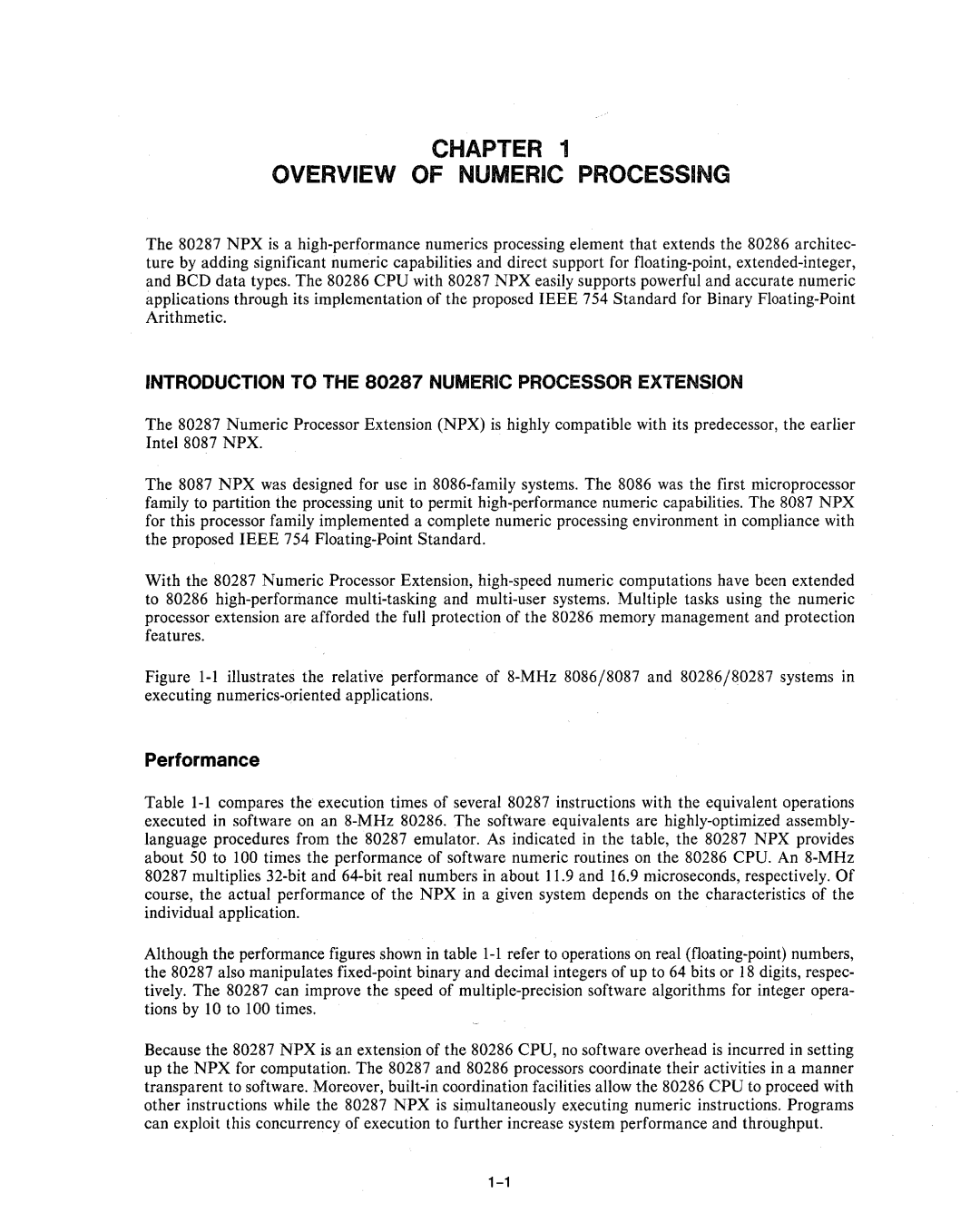
CHAPTER 1
OVERVIEW OF NUMERIC PROCESSING
The 80287 NPX is a
INTRODUCTION TO THE 80287 NUMERIC PROCESSOR EXTENSION
The 80287 Numeric Processor Extension (NPX) is highly compatible with its predecessor, the earlier Intel 8087 NPX.
The 8087 NPX was designed for use in
With the 80287 Numeric Processor Extension,
Figure 1-1 illustrates the relative performance of 8-MHz 8086/8087 and 80286/80287 systems in executing numerics-oriented applications.
Performance
Table
Although the performance figures shown in table
Because the 80287 NPX is an extension of the 80286 CPU, no software overhead is incurred in setting up the NPX for computation. The 80287 and 80286 processors coordinate their activities in a manner transparent to software. Moreover,
